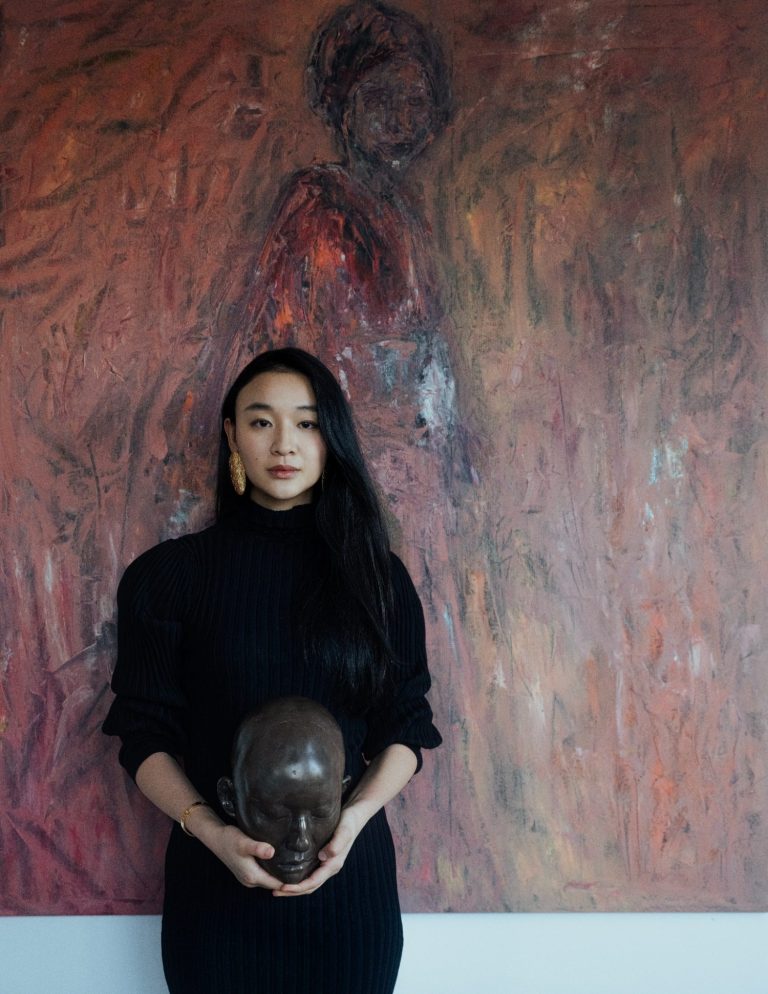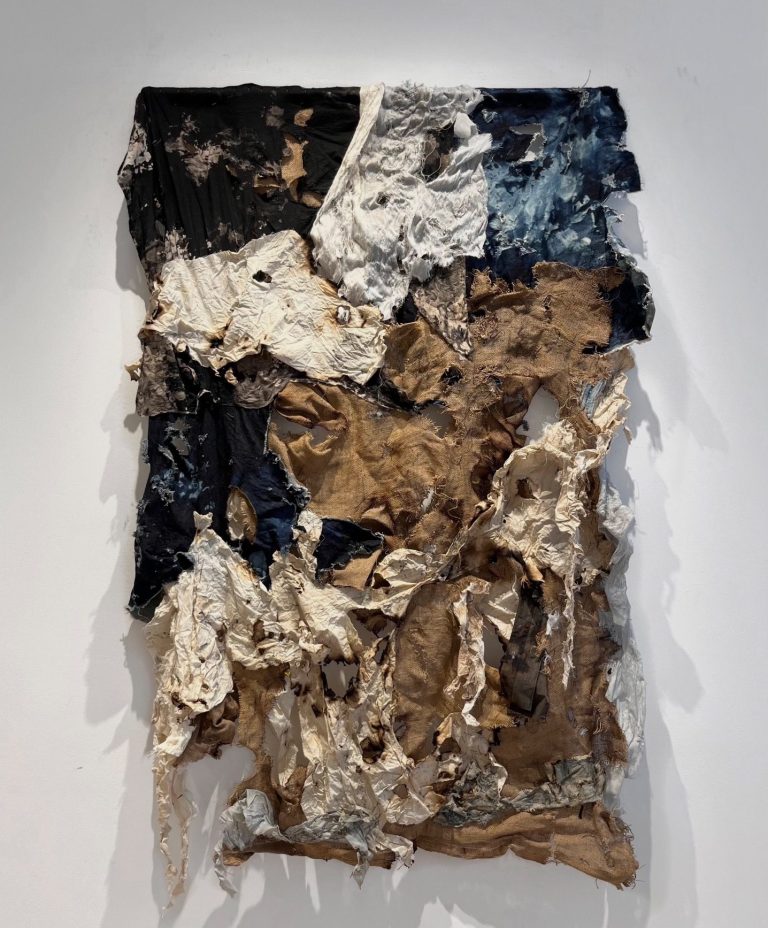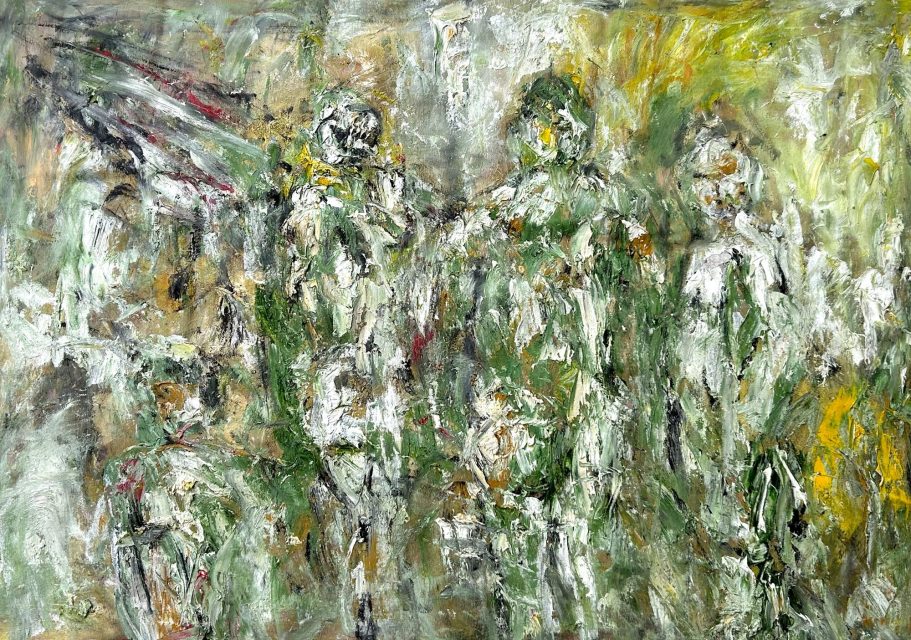
Mizuki Nishiyama
Mizuki Nishiyama is a London-based, mixed-Japanese artist who creates raw and confrontational artworks spanning paintings, sculptures, tapestries, poetry, and performances that explore the fragile human condition.
Nishiyama notably conducts dialogues and critiques the socio-politics of the female experience by incorporating the artist's Japanese paternal soil, which has buried her military ancestors since the 1400s, into her works, where she reevaluates ancestry, patriarchy, and time.
Exploring ideas of purity, femininity, Shintoism, and trauma; the artist utilises the elements of the world, and responds to what it means to be a woman today. The premise of the work begins with soil that the artist excavated from her paternal land in Japan; which dates back to the 1400s where her military ancestors (including members who committed Seppuku ritual suicides), and members that shaped Shintoism (Yoshida family; constructing the foundation of purification within the religion).

Recontextualising what it means to be a modern Japanese woman through materiality.
“Sorei” translates to “spirits of ancestors” in Japanese. Exploring Japanese philosophies, materiality, and feminine theories through a reconstruction of materials utilising Japanese Boro (traditional peasantry weaving), and Sashiko (traditional embroidery) methods.
The tapestry ponders a poetic blend between concepts regarding destruction and reconstruction. Nishiyama burns burlap, linen, cotton, synthetic fibres, and denim, distresses the fabrics, naturally dyes each piece in wet ash, the artist’s paternal land soil, as well as a selection of Japanese teas before weaving the pieces of fabric back together with needle and thread.
The word “Boro” comes from the term “boro-boro”; meaning tattered or repaired. The aesthetics touches upon Japanese theories such as “Wabi Sabi” (acceptance of transience and imperfection), as well as the “Ura” (underneath, or shadow) ways of looking at life. The tapestry inherently goes through a tumultuous process; both nourishing yet violent. In addition, materiality also opens a conversation in regards to marginalised females within textile art. The ritualistic process of shredding, combusting, burying, rebirthing, and refurbishing materials builds expectations, culture, and history with a newfound sense of control and modernity.
Floating Weeds, 2023, Oil and Soil on Canvas, 97.5 x 68 cm

Sorei, 2022, Mixed Media Tapestry , 180 x 110 cm
A mixture of the East and West, and guided with poetic elements of spring blossom and winter wilt. "Floating Weeds" explores the transcendence of time, body, and nature. Within the artist's on-going series of "Bodies in Motion", where the human body is investigated metaphysically. The artist analyses how time, movement, and the human comprehension of this cohesion can be represented through paintings.
Inspired by Japanese Poet Matsuo Basho's poetry writing style, evoking profound emotions and insights into nature and life through simple and distinct language. Nishiyama combines the translated elements of Zen-influence Philosophy, and Western existentialism into a consistent language of art techniques such as incorporating Japanese traditional art materials or cutting applied pigment with a knife.
‘For me, creating is like vomiting. There is an impulse, a grave desire, an urge to reveal—to throw up everything that is within me. You could say that it’s therapeutic, but honestly, it lies somewhere between healing and being somewhat destructive. Painting simply makes me feel human. It is a practice that reassures me that I am alive– that right now, I am here.’ --Mizuki Nishiyama
©ZII. All rights reserved.
We need your consent to load the translations
We use a third-party service to translate the website content that may collect data about your activity. Please review the details in the privacy policy and accept the service to view the translations.
